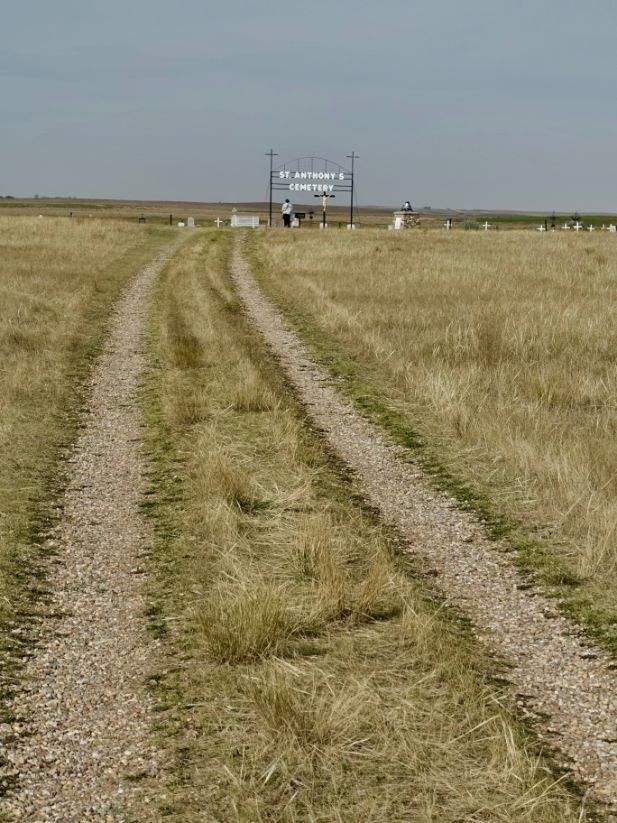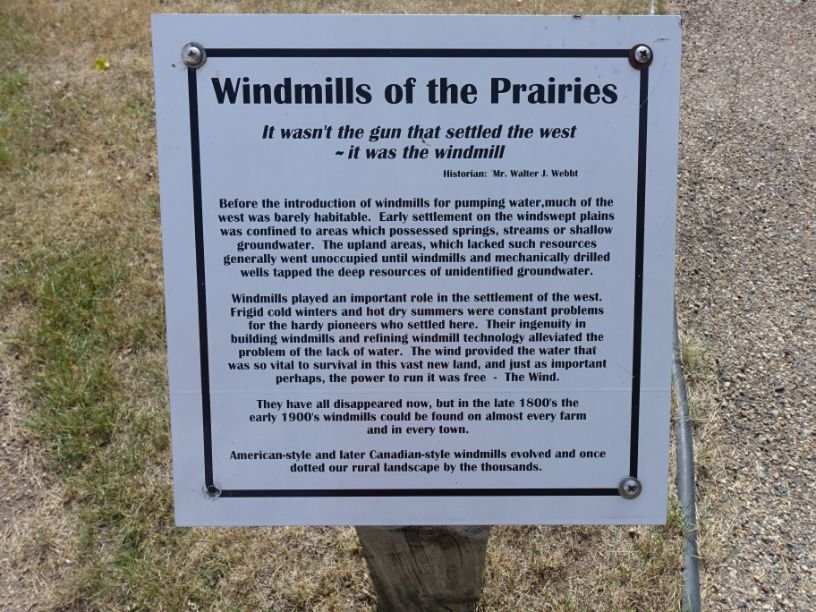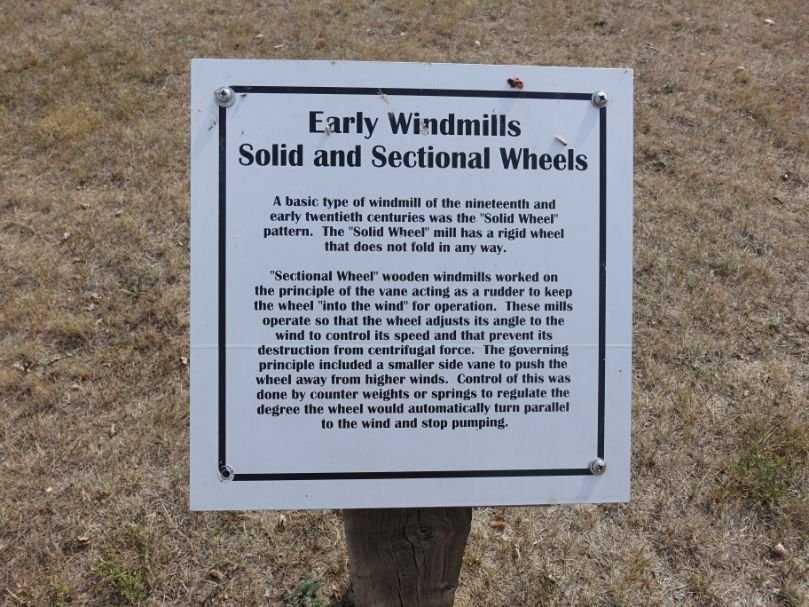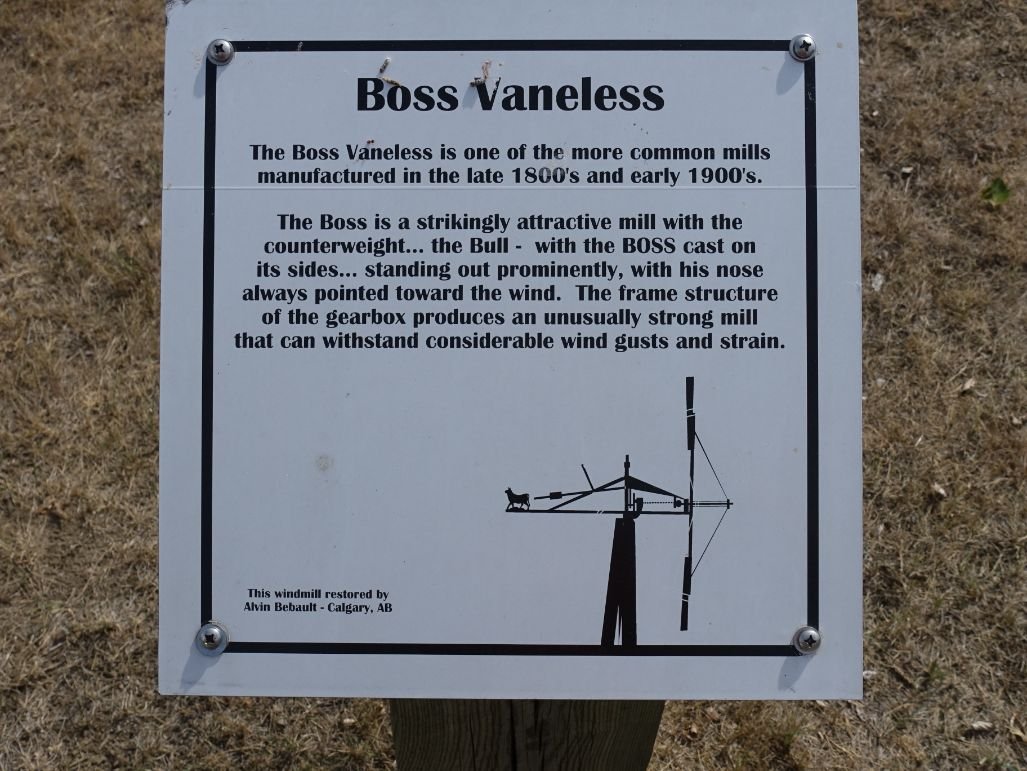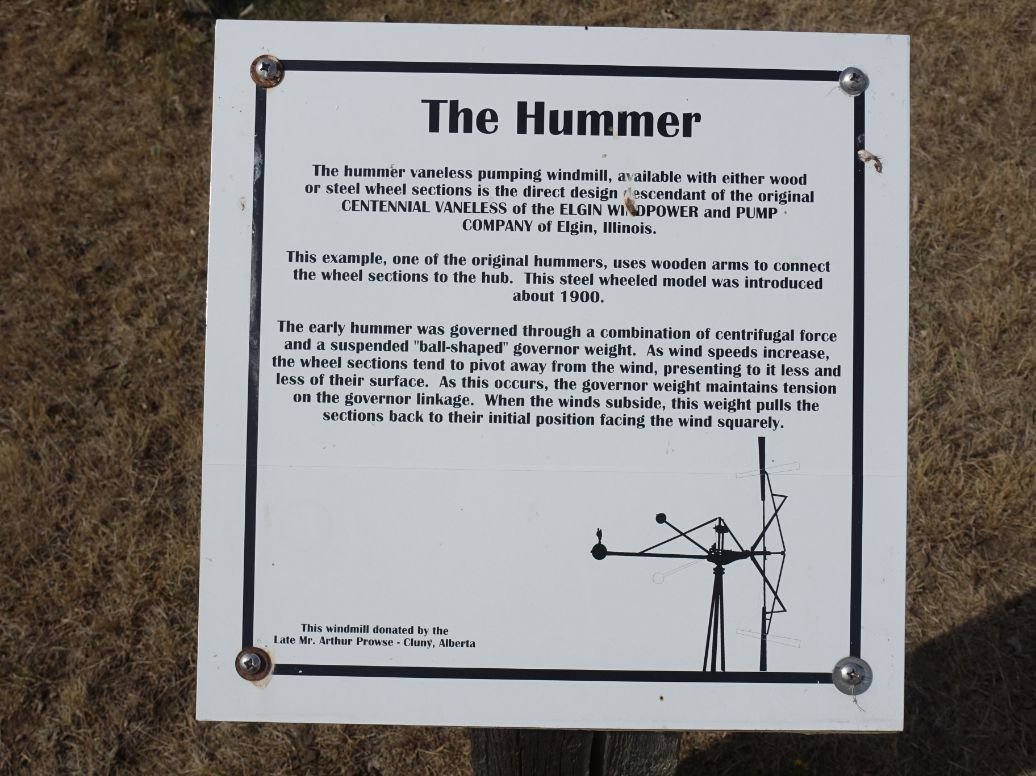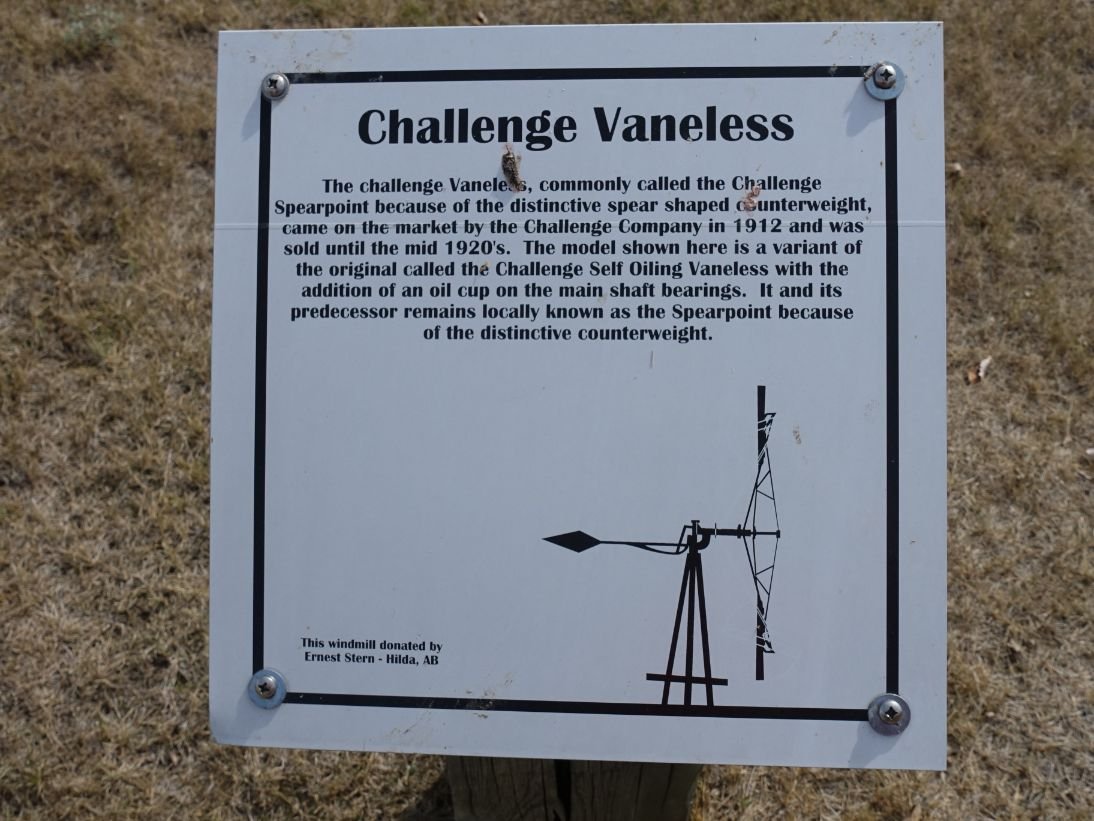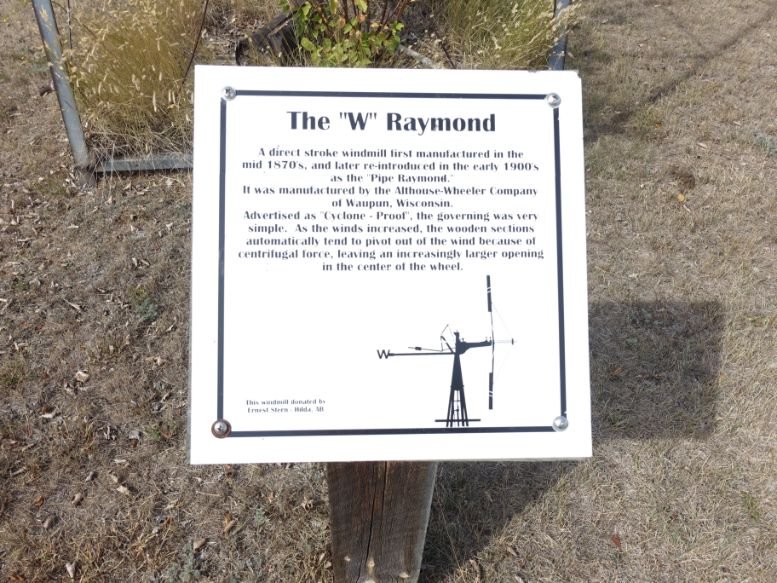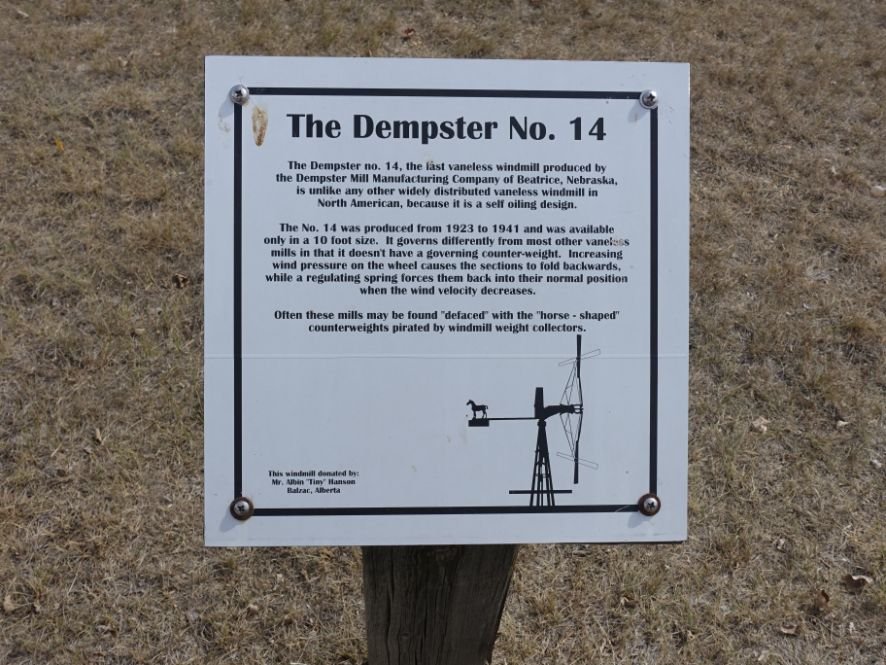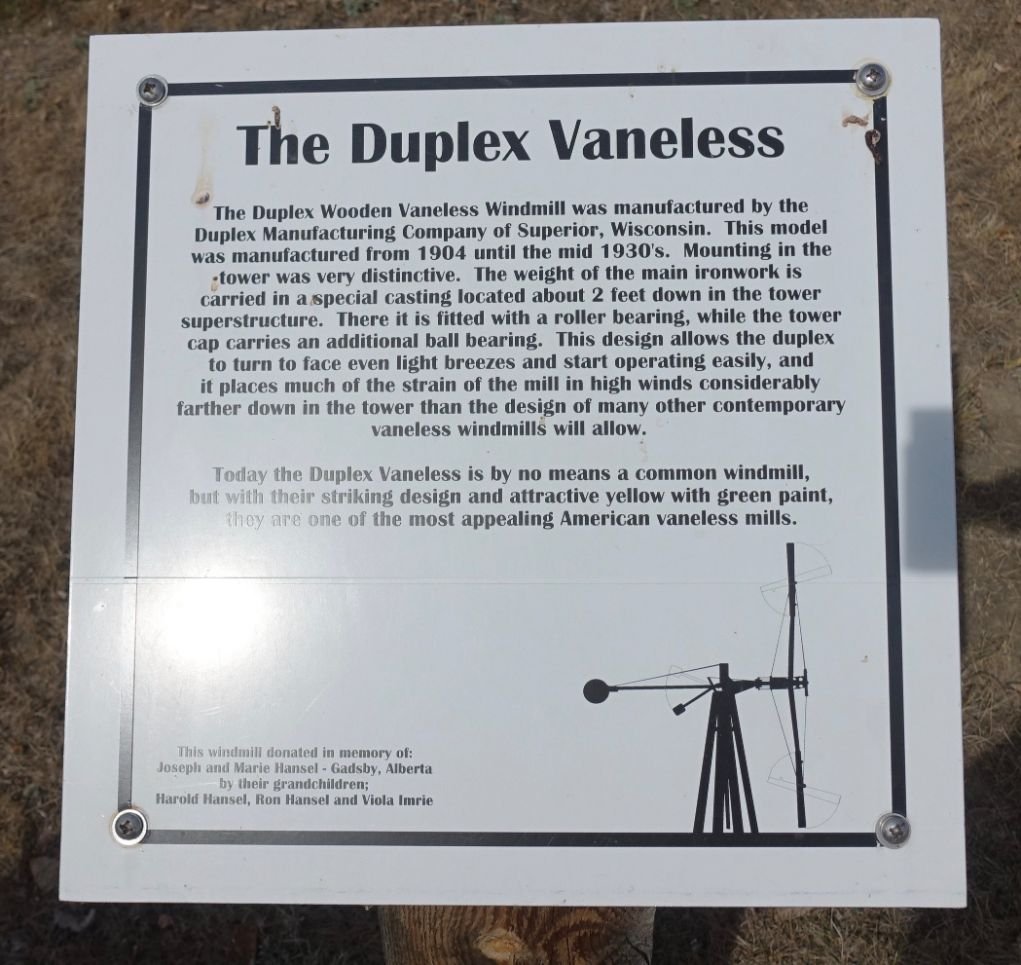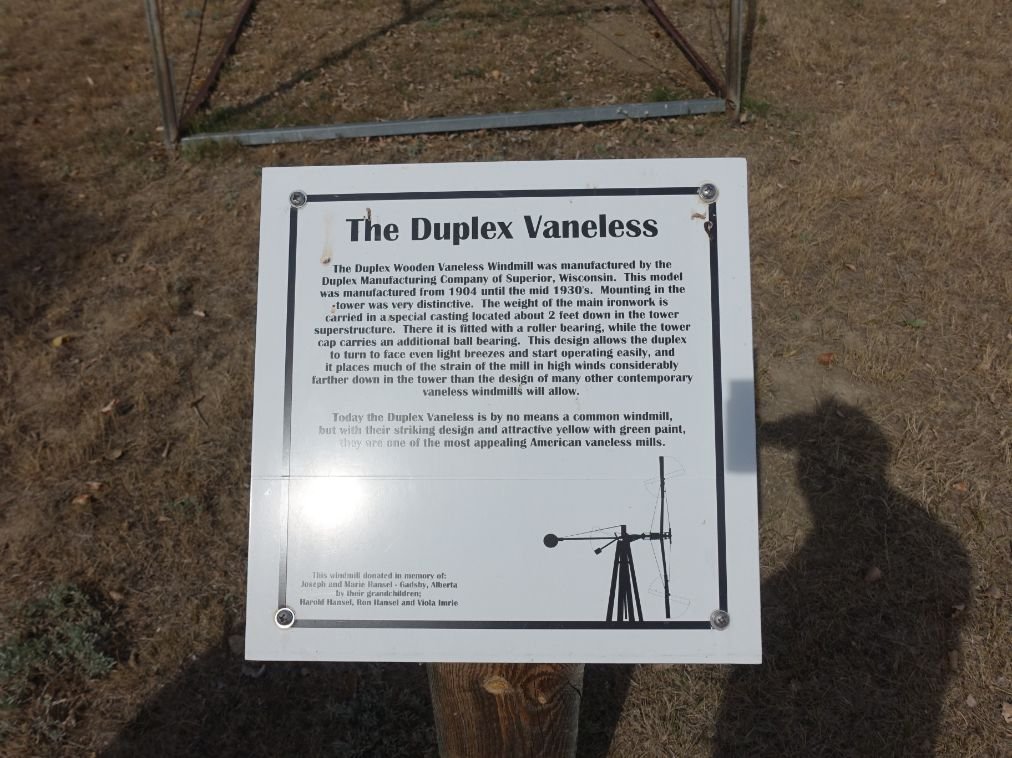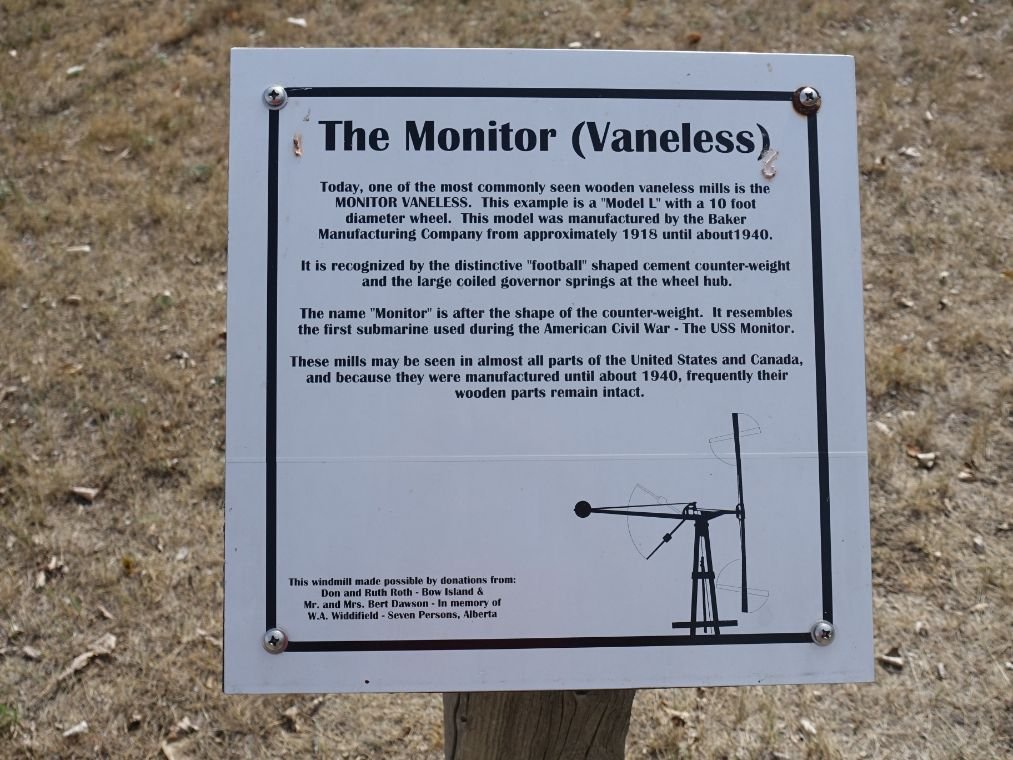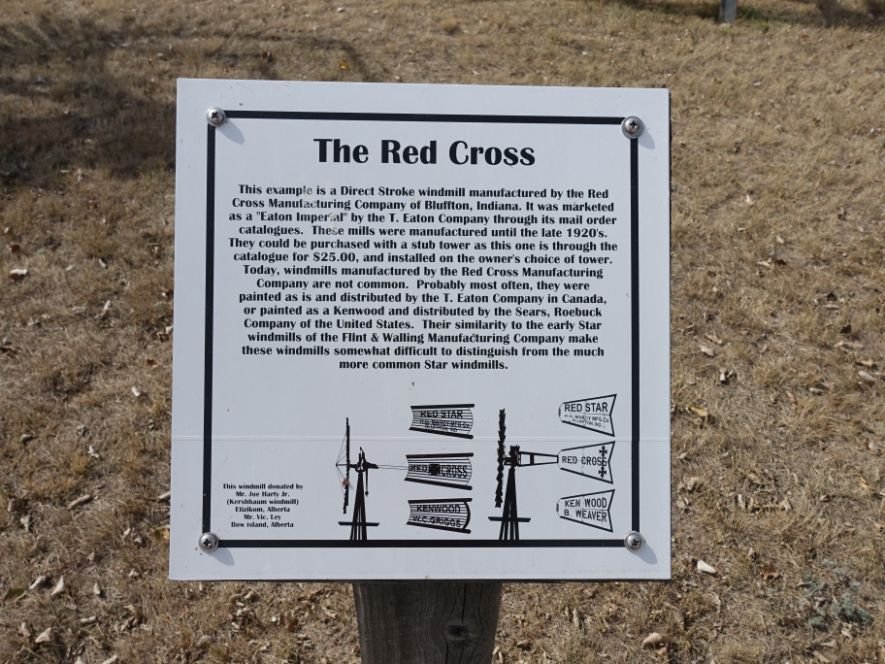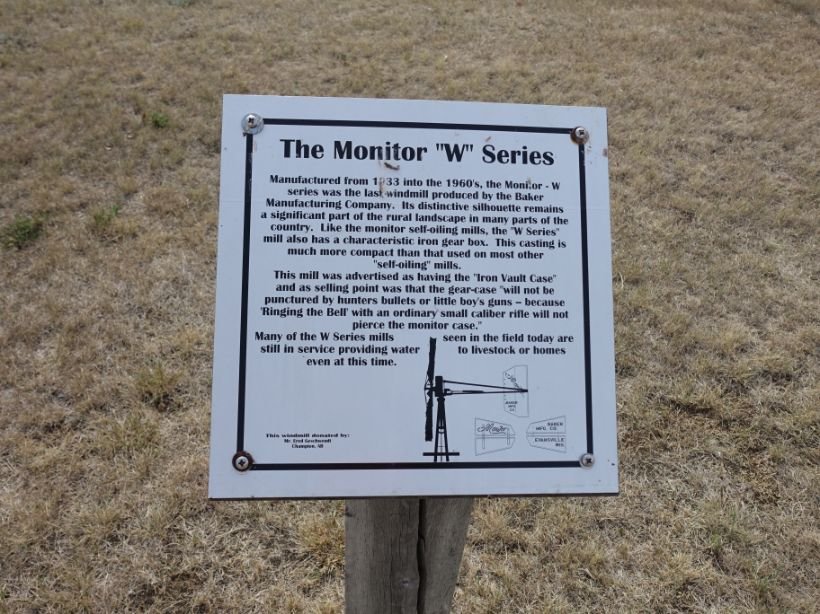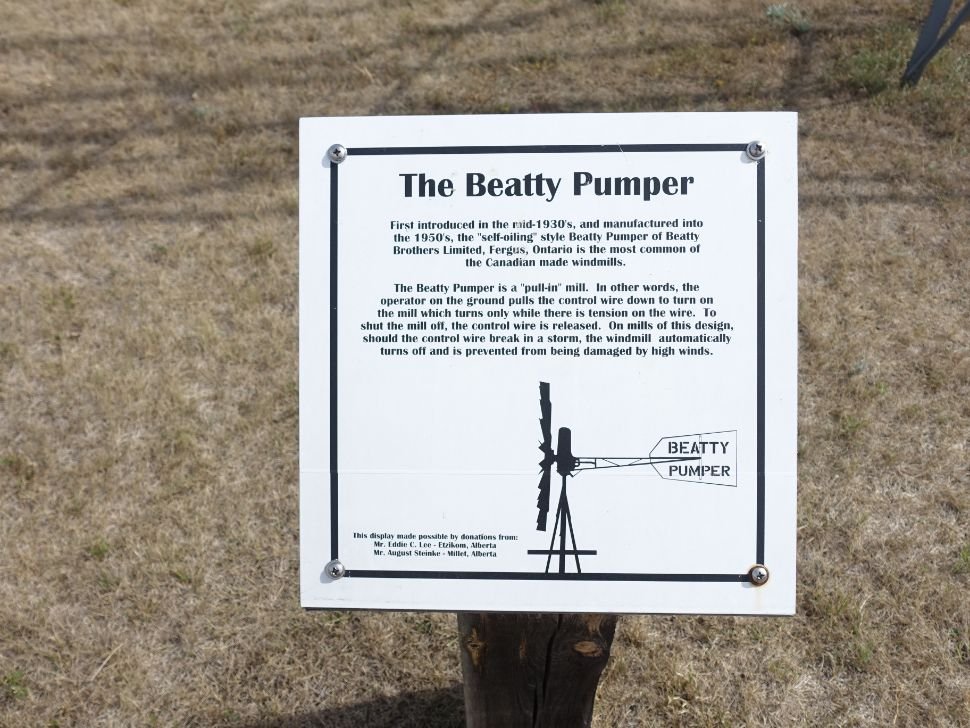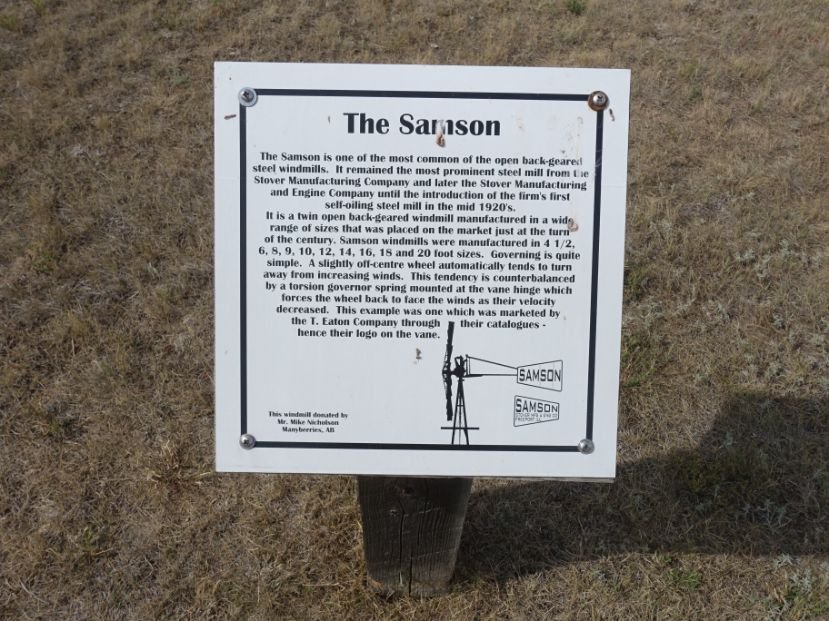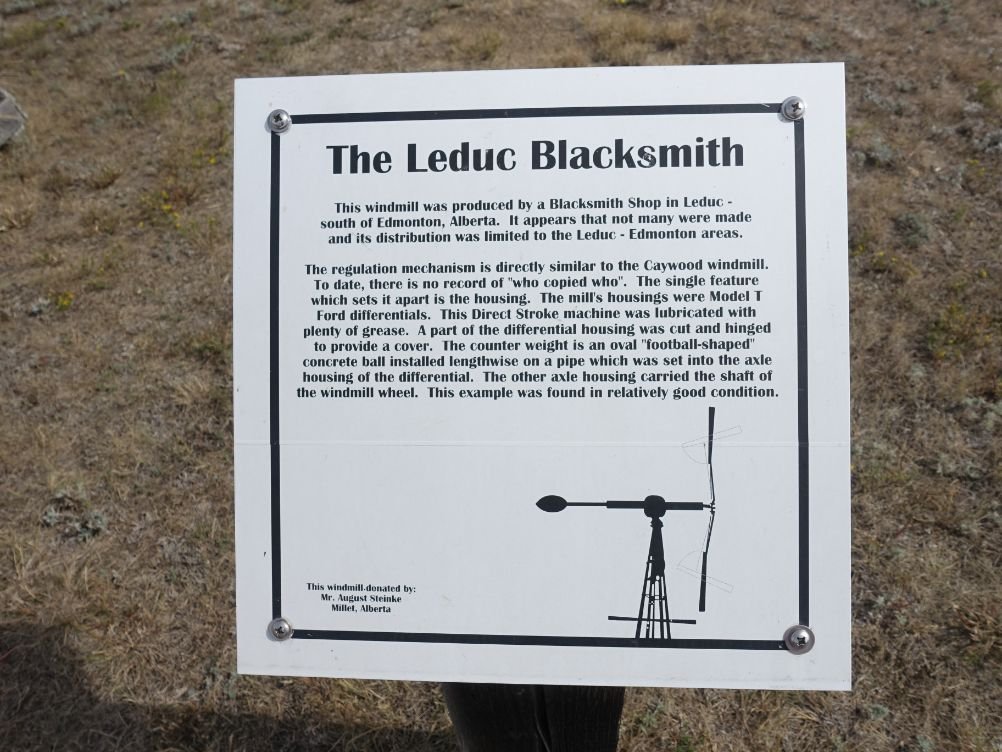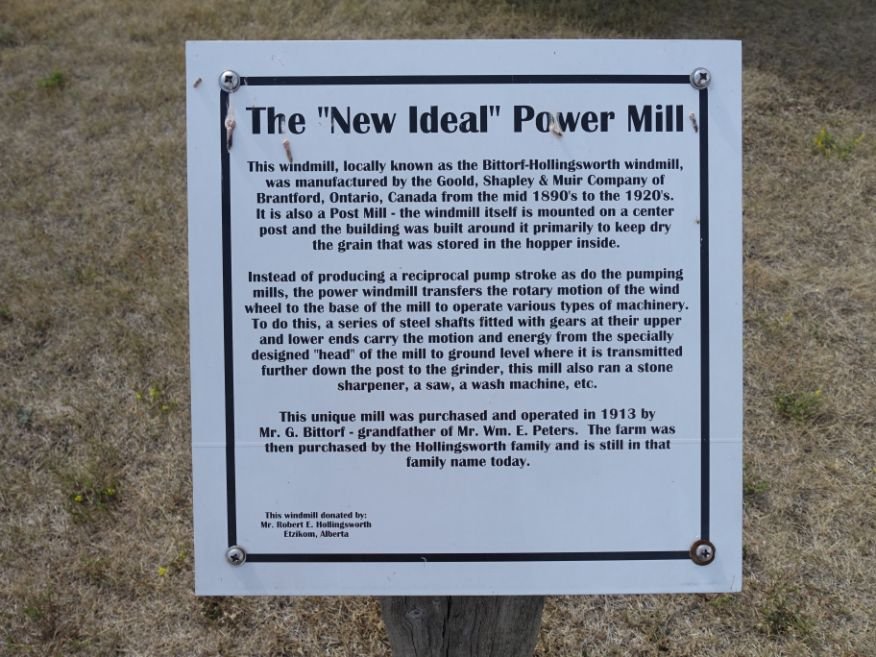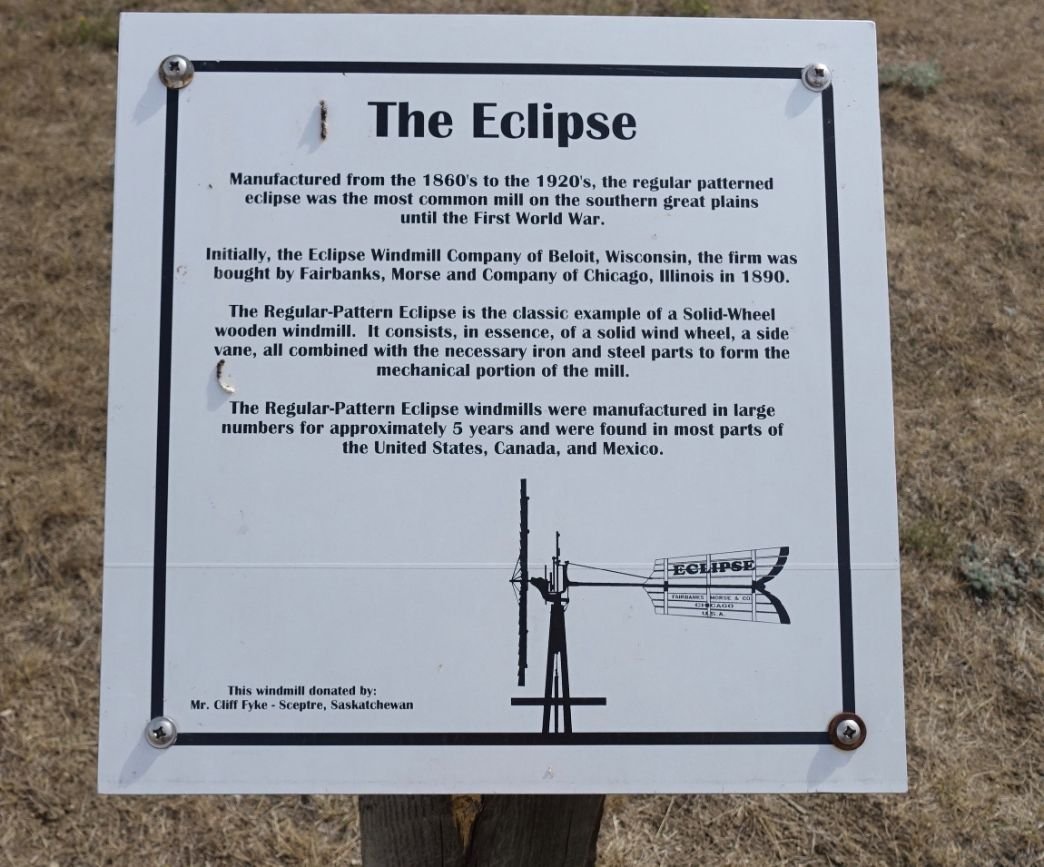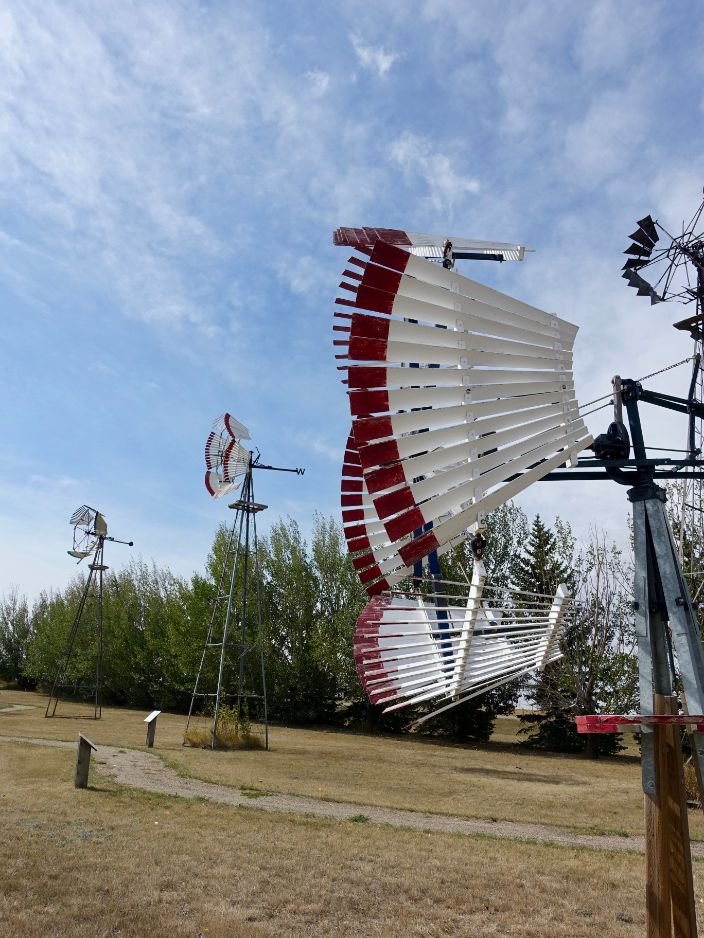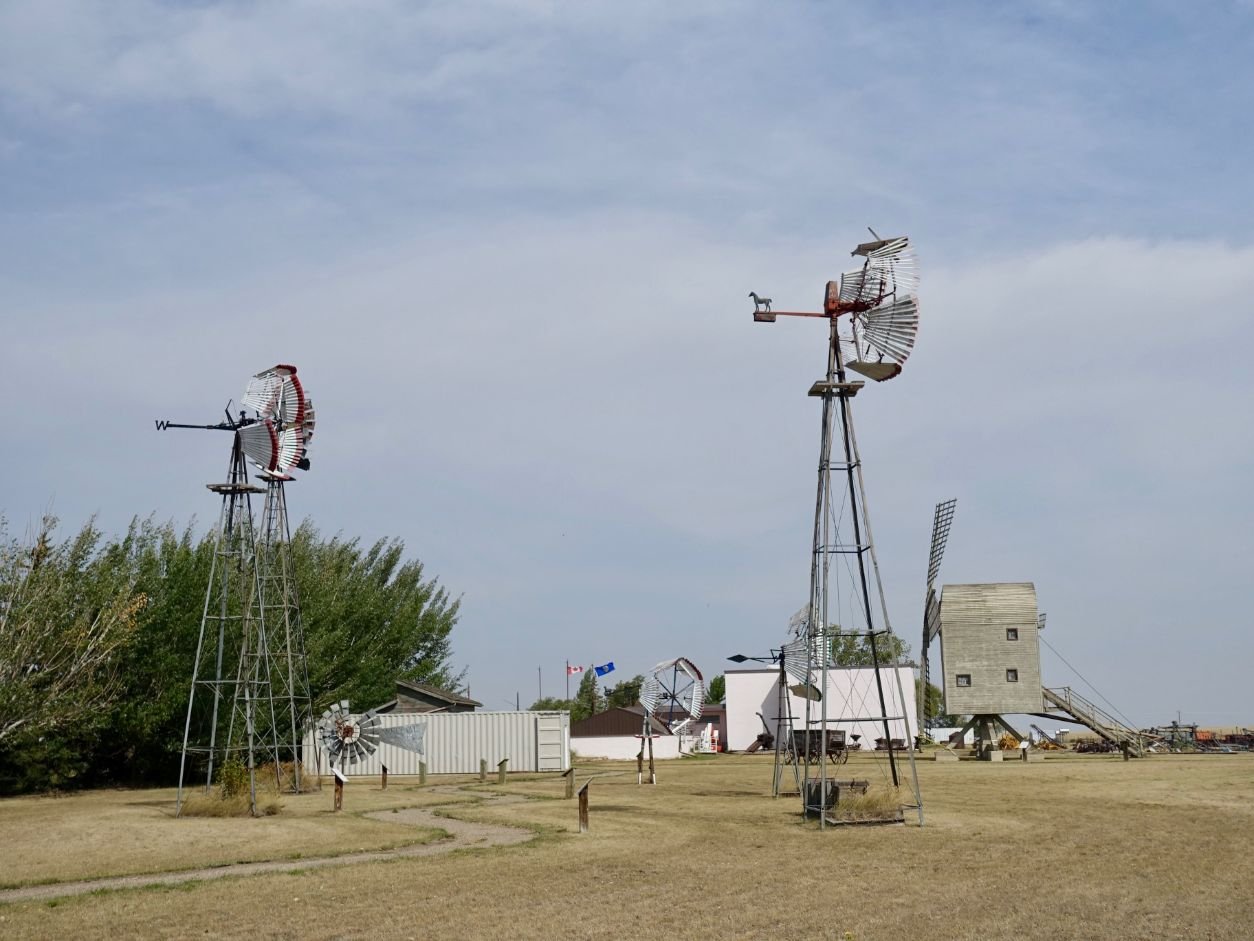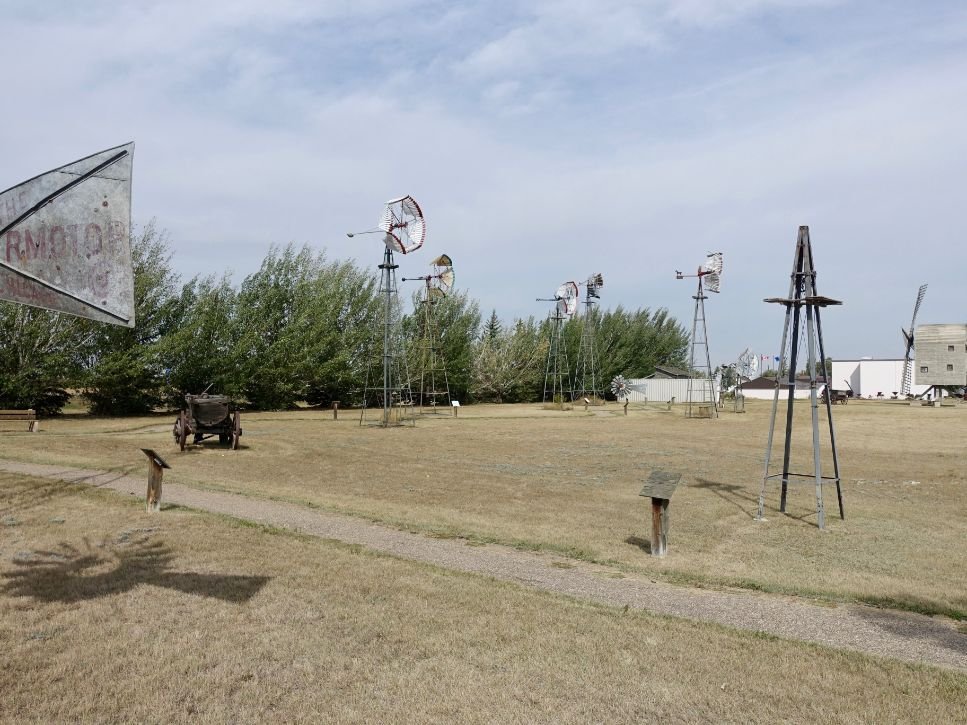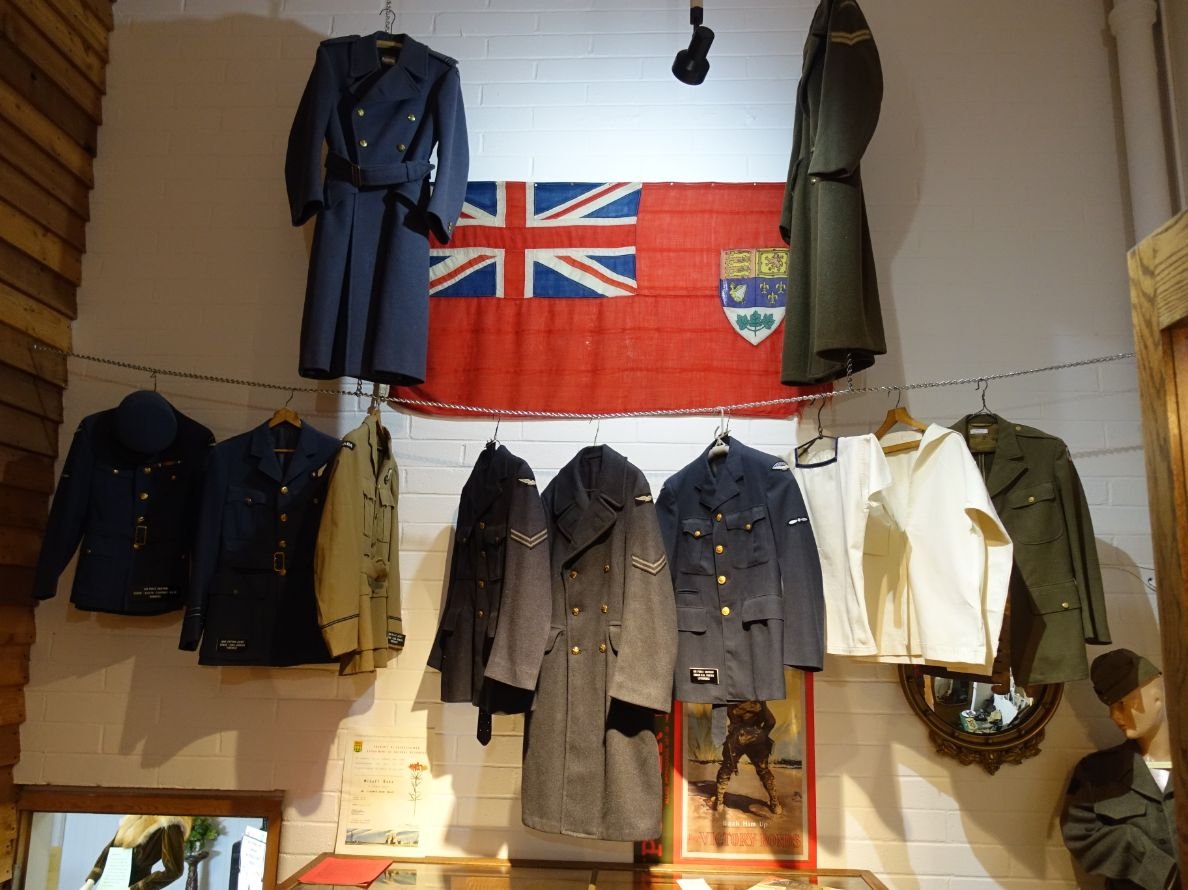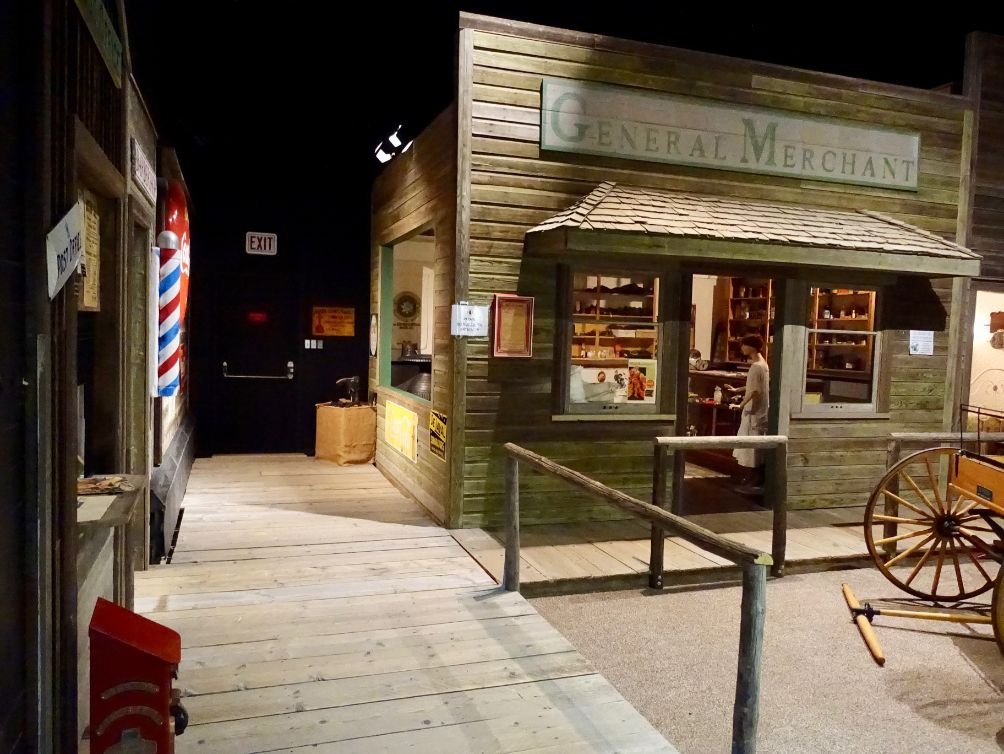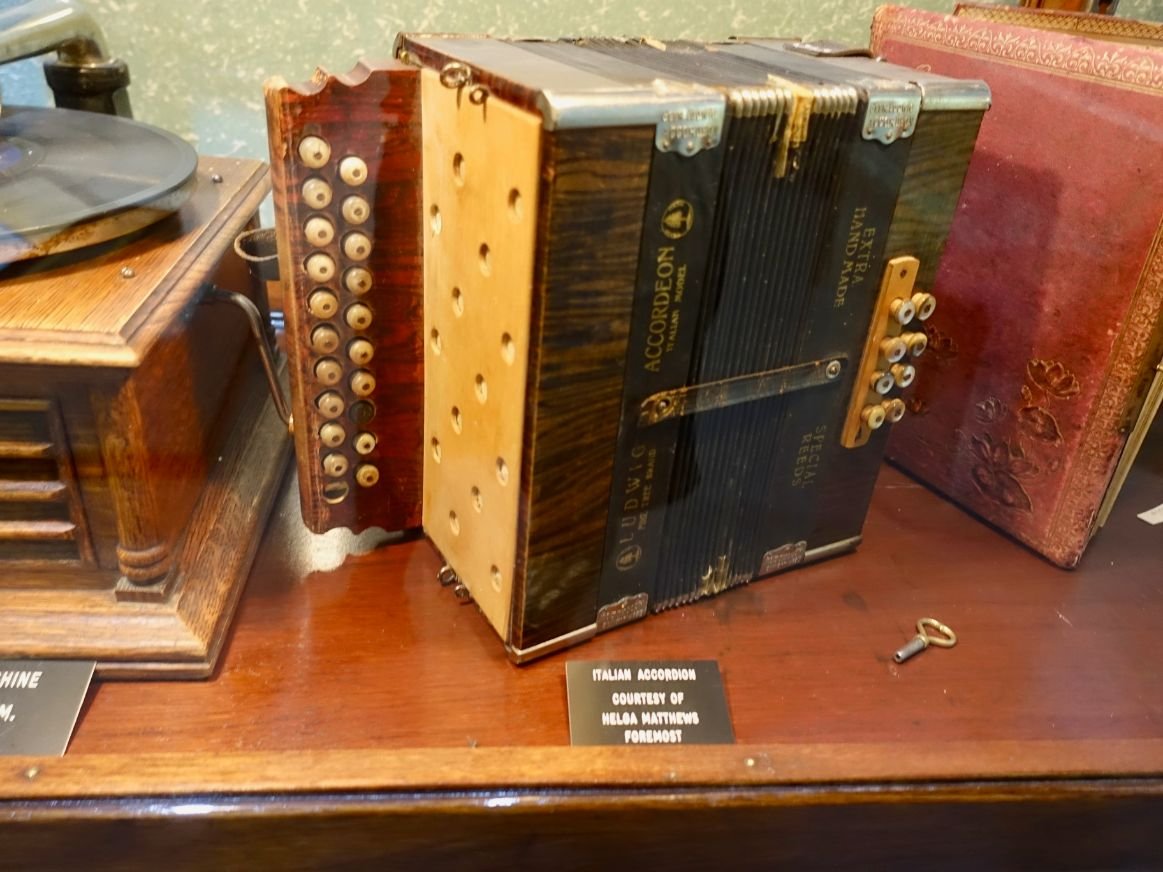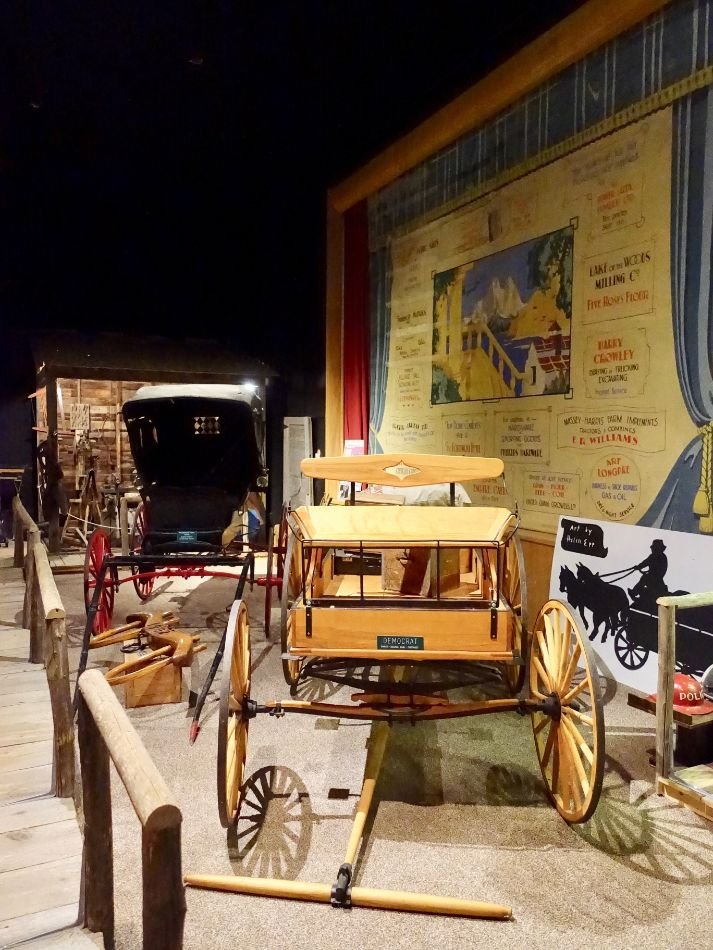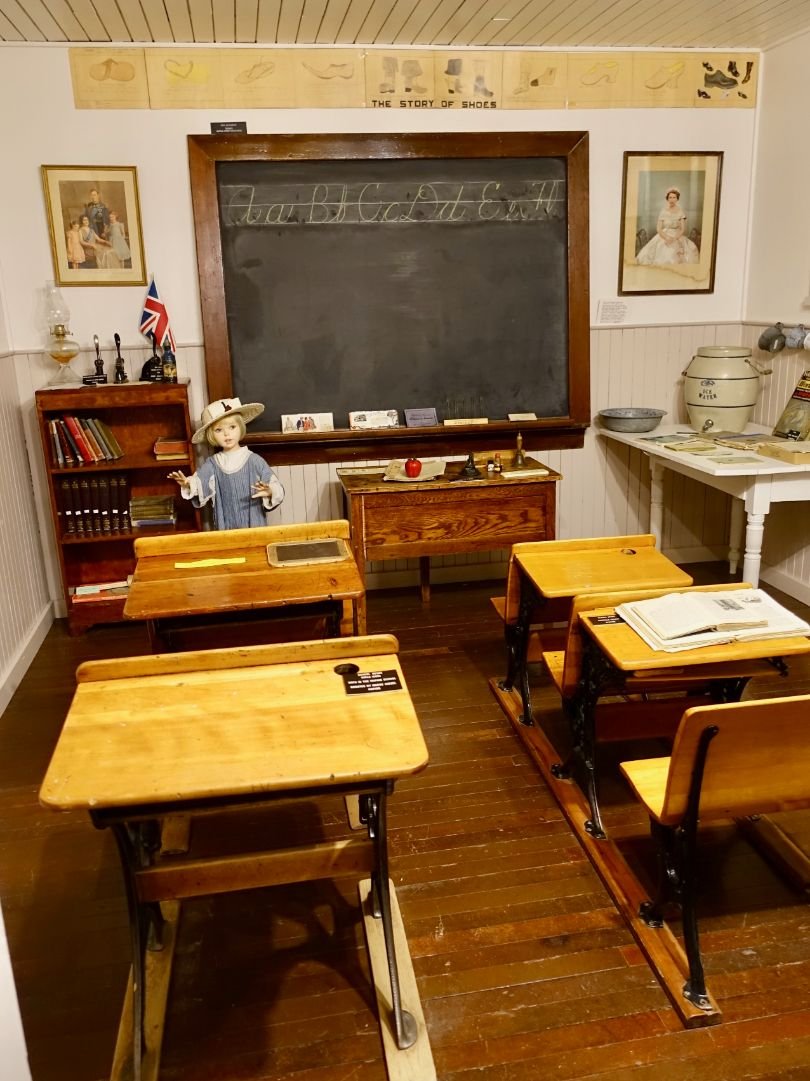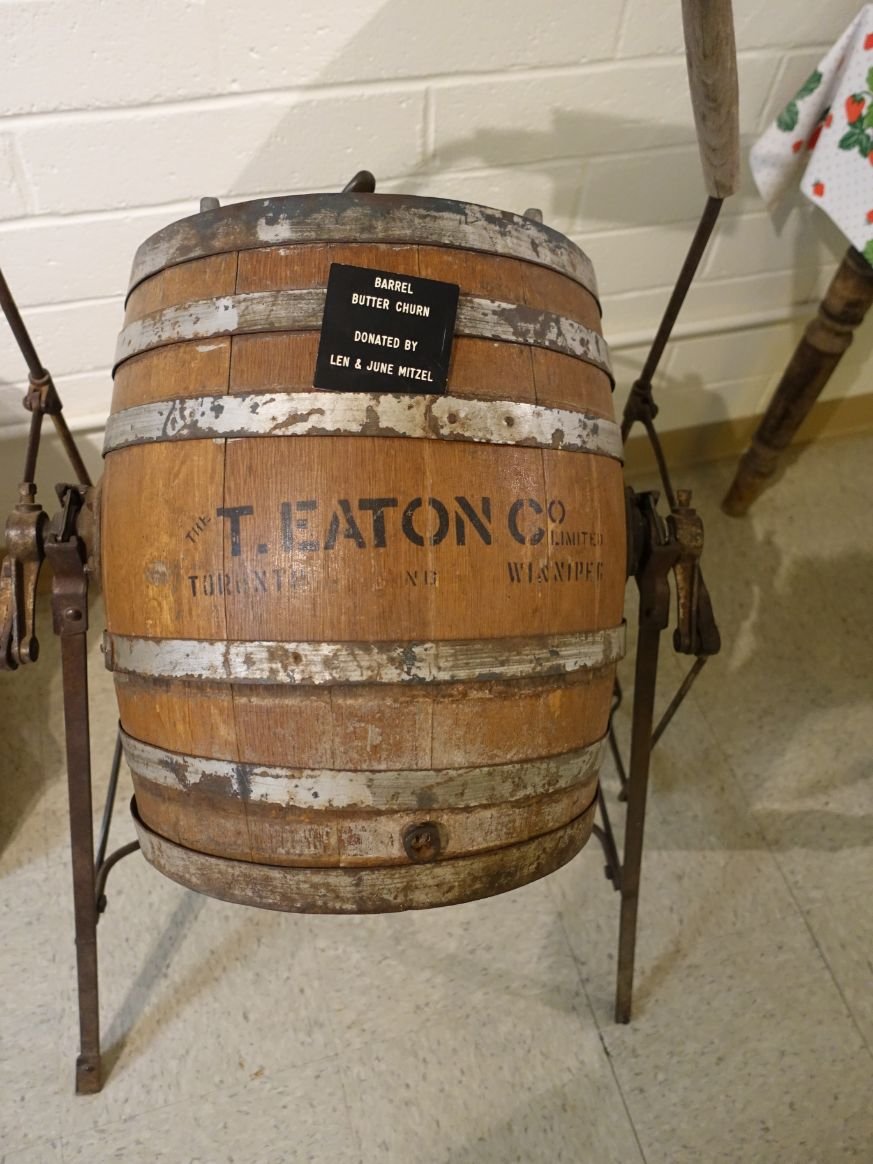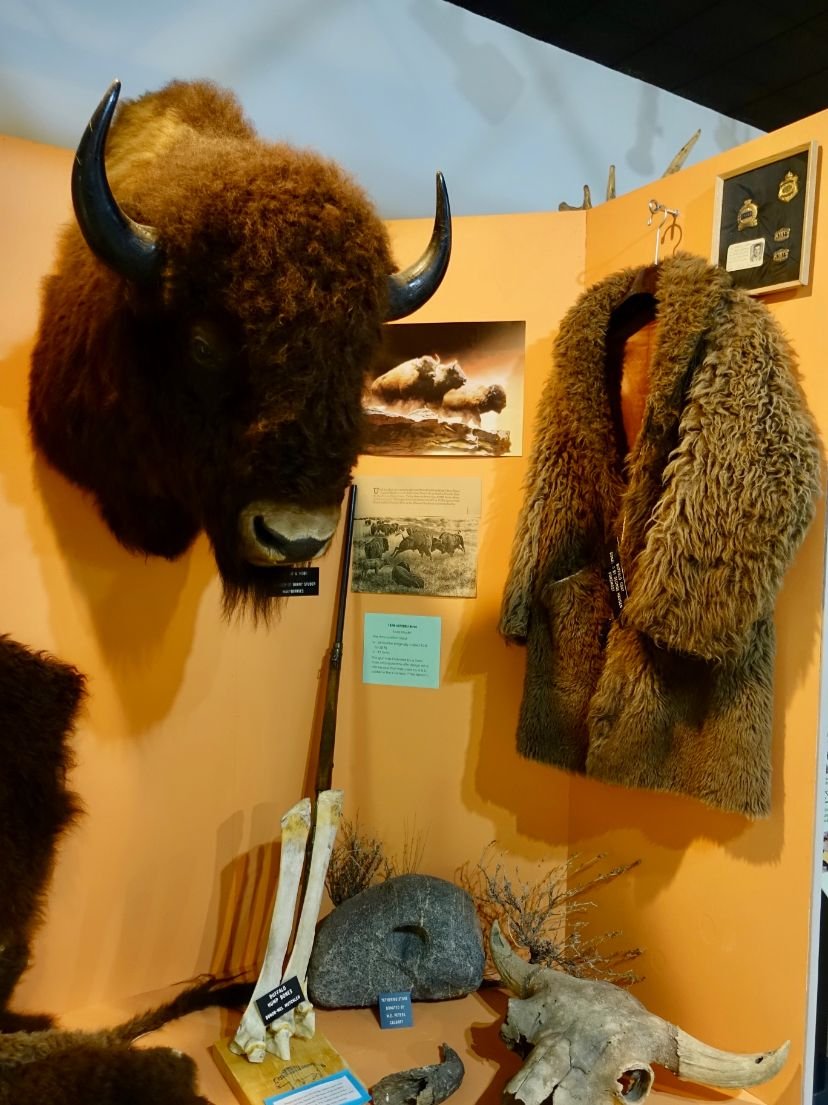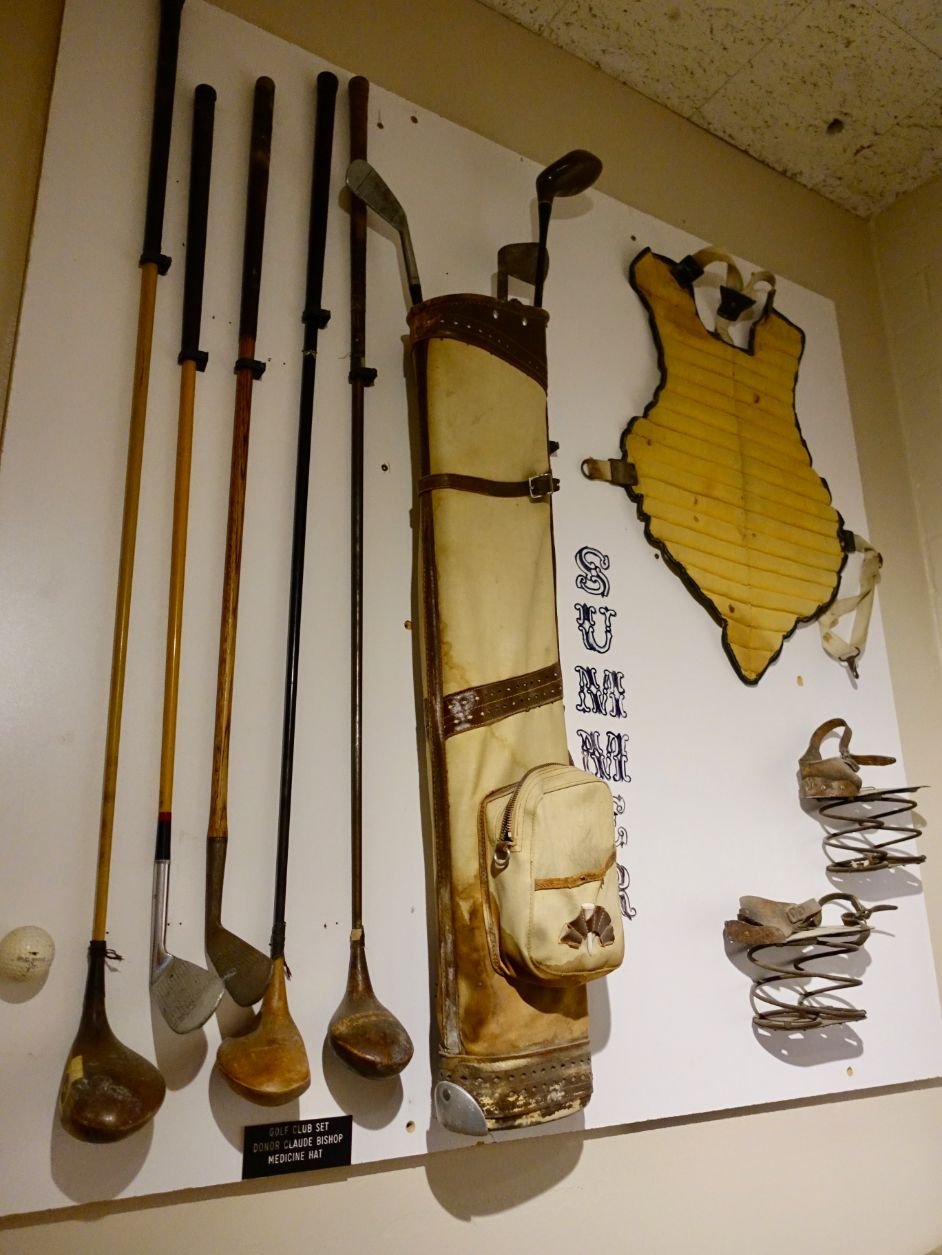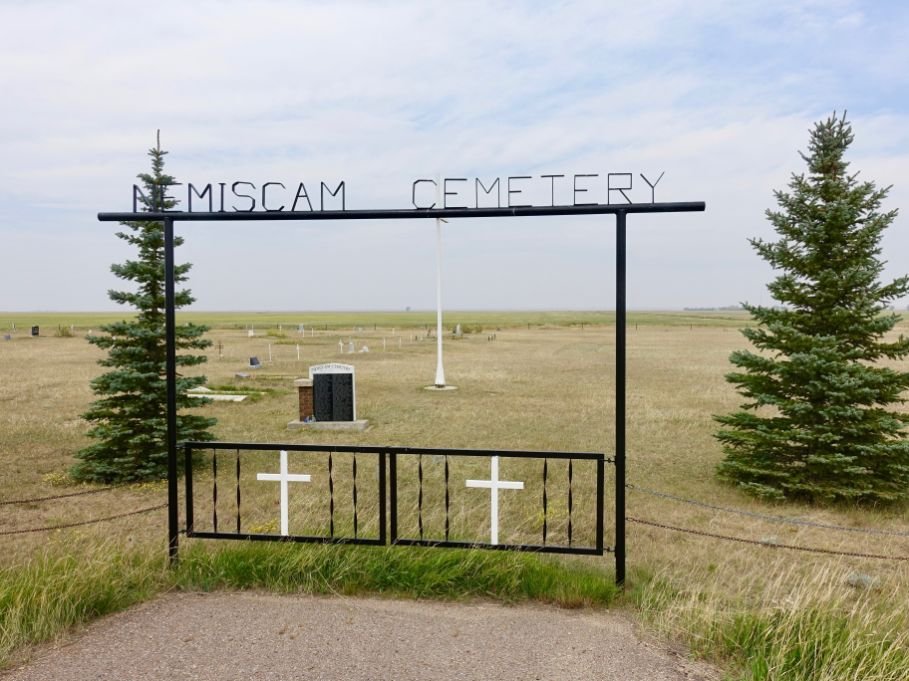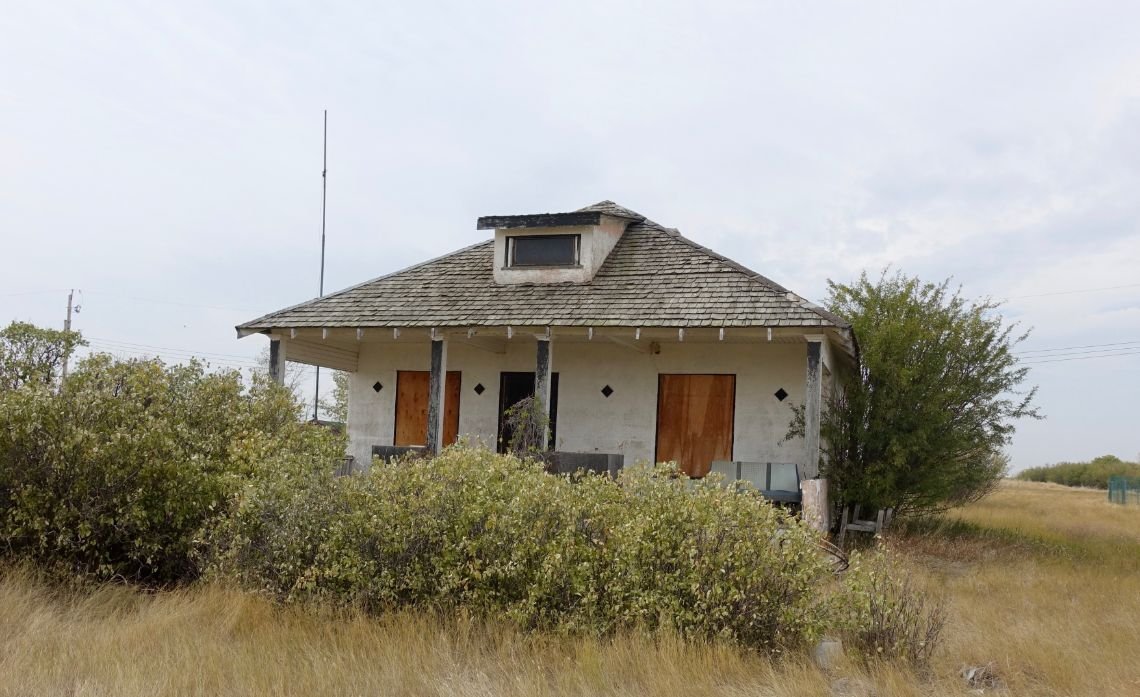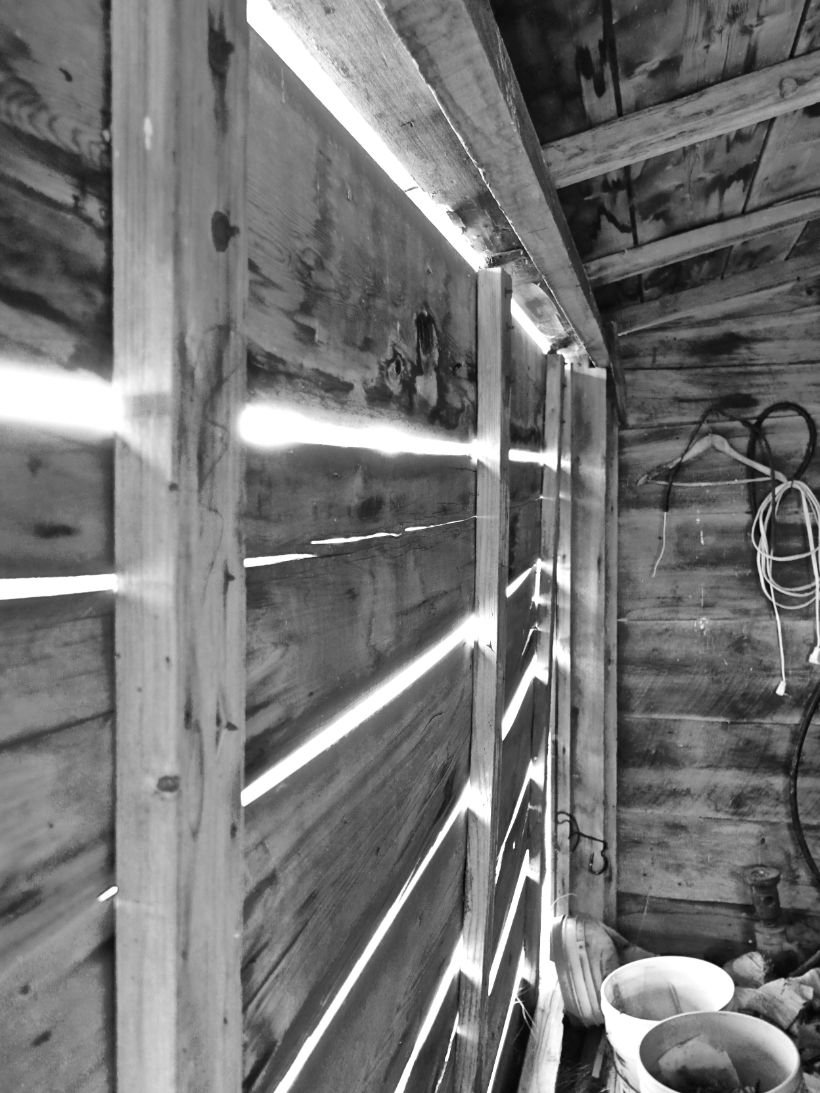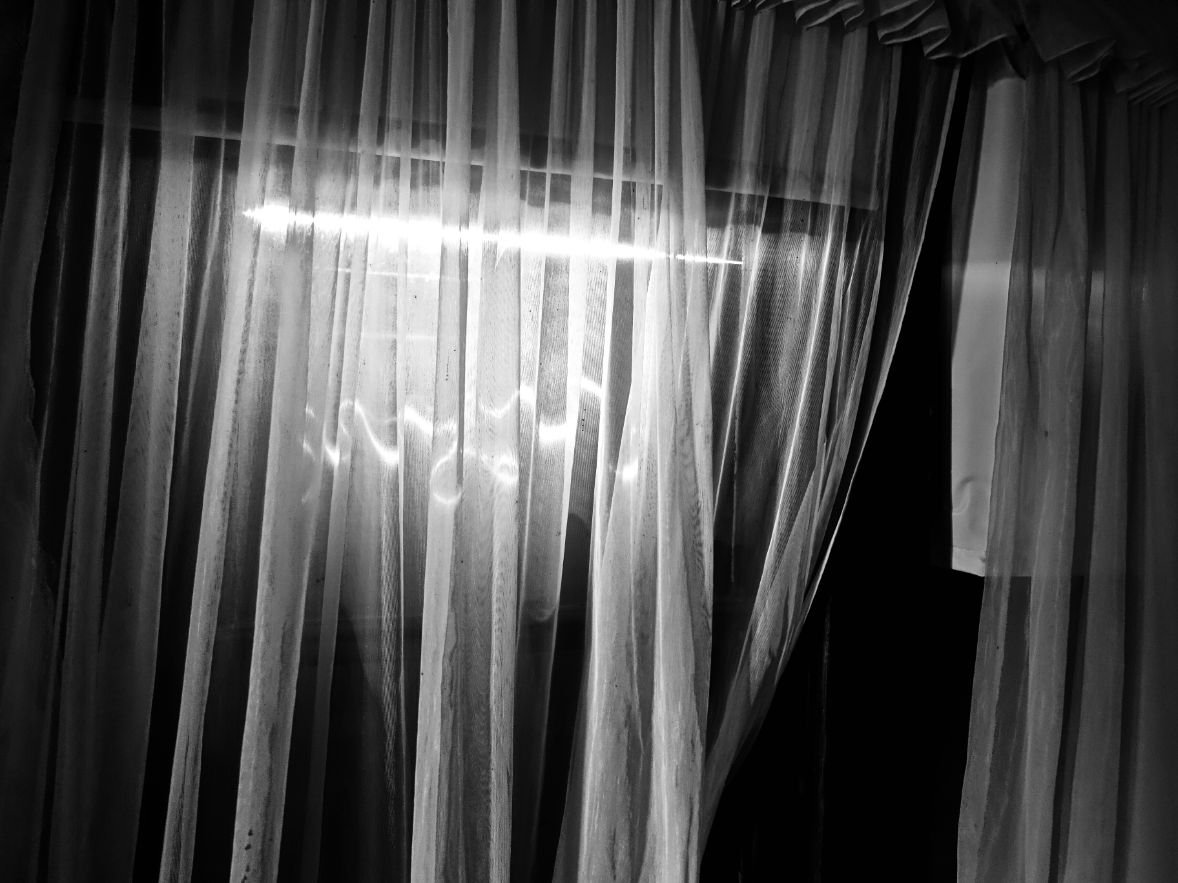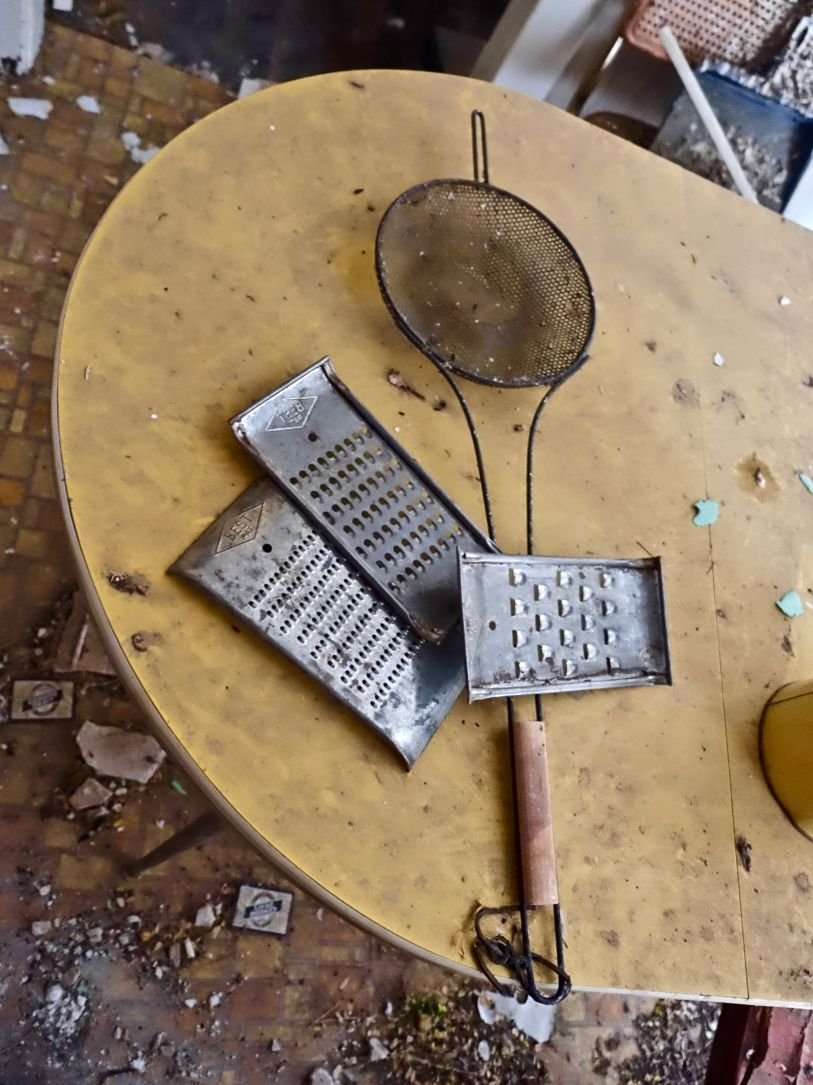Slow Travel: Medicine Hat to Warner via Etzikom
After spending a few days in Medicine Hat, Alberta this summer, it was time to make our way to Warner, Alberta where we planned to stay overnight, so we just had a short drive to Writing-On-Stone Provincial Park for our guided tour the next morning. With it being only a two hour drive from Medicine Hat to Warner, we had all day to find fun places to stop along the way.
Earlier research had uncovered a Windmill Museum at Etzikom that looked interesting. Also along Highway 885, Google Maps showed St. Anthony’s church in the middle of nowhere that caught my eye. And having also researched ghost towns in Alberta, Nemiskam is not too far off of highway #61 (also known at the Red Coat Trail) that links Etzikom to Warner. Our biggest challenge: finding a place for lunch as there are not a lot of restaurants along these backroads, with even fewer being open on a Sunday – our day of slow travel.
So off we went, with lunch packed, not quite knowing what the day might bring.
“Book Shelf” Nemiscam, Alberta
Electric Bikes, Etzikom Museum
Rattlesnake / Church / Cemetery
As planned, our first stop was the abandoned St. Anthony’s Roman Catholic church. You can’t miss it - it is literally just off the highway, with nothing around it but farmers’ fields.
When we pulled over we were immediately greeted by a young rattlesnake sunning itself on the asphalt driveway. We didn’t bother it and it didn’t bother us.
Walking through tall grass we had a look at the well-weathered wooden church that is literally falling in. You can climb up and see inside, but there is little to see. However, the cemetery is very interesting with its diversity of graves - some well-maintained, others crumbled beyond recognition. As you stand there in the middle of the wind swept prairie, you are reminded of the hardships faced by the early settlers in transforming the native grasslands into viable farms.
There are small cemeteries scattered across the prairies, often next to churches or on the edge of small towns – the St. Anthony’s Church cemetery is one of the better ones. Not only does it have an elaborate entrance, but it is well maintained. There is even a box with a one-page history sheet by Johanna Schile and Anthony Stappler.
Excerpt
“The first settlers arrived in 1908/09, with John Lippert being the first person to die in 1911. This necessitated the creation of the cemetery on a 5-acre plot donated by Joachim and Regina Schaan (both are buried in the southwest corner of the cemetery). The church was built in 1912 by volunteers and a collection of $50 per family. In 1947, the Bar Vee school house was purchased and moved to the church yard to serve as a social centre and catechism classroom. The church was deconsecrated in 1991 and in 1995 the statues and crucifixes were removed to Bow Island and pews to Foremost. The cemetery is still active and the County of Forty Mile has taken over the maintenance.”
After about 20-minutes, we headed back to the car to continue our journey. (FYI The rattler was gone and we didn’t see any more on our trip.)
Windmills / Dolls / Pies
Though I had seen photos of the Etzikom Windmill Museum, I was still taken aback by the number and size of the windmills in the collection. While the Museum is only open in the summer, the windmills are available for viewing year-round. Information next to each windmill creates a self-guided tour. We probably spent 30 minutes wandering around the windmills and other pioneer farm equipment, as I had to take photos from several different angles.
Officially called The Canadian National Historic Windmill Interpretive Centre, the site encompasses the history of wind power utilization in Canada. It includes a collection of antique windmills, as well as reproductions of a general store hotel/rooming house, schoolhouse, blacksmith shop, barbershop and bath, post office and an early 1900s home complete with parlor bedroom and kitchen. (FYI the buildings are only open when the museum is open).
The Etzikom Museum, an old school, was a pleasant surprise as the quality of the exhibitions and artifacts were excellent, with each of the classroom dedicated to a different aspect of pioneer life on the prairies. If you are into antique dolls, this is a must stop, as the museum has a large collection.
Definitely give yourself 30 minutes or more to wander the galleries and the gift shop. There is also some homemade baking that you might want to enjoy there – take with you for the road.
And, be sure to take a drive around the town of Etzikom before you leave. It looks like it could become a ghost town in a few years. However, someone is trying to keep the town alive, as they have perhaps the most elaborate street name signs in Alberta, maybe even in Canada.
Nemiskam Nightmare
Nemiskam is gone but not forgotten – there is still a sign on Highway #61 indicating the exit. As you drive along the back road, it’s about 5 minutes before you see a few buildings and trees to the east. Once there, you will find a couple of abandoned houses and buildings and one that still looks lived in. Walk around and you will discover the original main street sidewalk. It is an eerie feeling.
I decided to stop and take some photos of the abandoned houses. Trying my best to conjure up my inner George Webber (Calgary photographer famous for capturing the history of Alberta’s past), I even ventured into one of the empty homes which looked a bit like something from a horror movie or a bad nightmare. I could have stayed all day, but my travel companion said “Let’s get out of here!
Red Coat Trail
Back on the road, Highway 61 is also know at The Red Coat Trail, a 1,300-kilometre route through Manitoba, Saskatchewan and Alberta that approximates the path taken by the North-West Mounted Police in 1874, from Fort Dufferin (Winnipeg) to Fort Whoop-Up (Lethbridge).
When just west of Foremost, we started following along what looked like an abandoned railway track, but then we encountered hundreds of what looked like brand new oil freight train cars lined up for what must have been 2+ kilometers. I wish I started to count when we first saw them. It was a definite reminder of how Alberta is struggling to get its oil to market in today’s political reality.
Warner
We arrived in Warner at about 4 pm, the normally two hour drive took us 6 hours. A bit early to check into our B&B, we decided to walk around town. It was depressing to find what use to be a prosperous farming community with a bustling main street almost devoid of any businesses today. Many of the homes showed little pride of ownership; even the town building needed a good paint job. The good news is the town has a relatively new school, which should keep the city viable for the near future, while residents hopefully figure out how to make the town viable again.
Our B&B was delightful. Once a Catholic Church, today it is a modern home, full of fun artifacts and welcoming hosts. A great place and ideally situated, for our trip to Writing-On-Stone Park the next day.
Last Word
It was interesting to travel the back roads of Southern Alberta and Southern Ontario this summer. The Southern Ontario small towns seem to have fared better than those in Alberta. Their heritage buildings made of stone and brick have fared better than the wood clad buildings of Alberta’s small towns. Also I suspect the greater diversity and smaller scale of Ontario farms, allows the towns to survive better in Canada’s the late 20th/ early 21st century economy.
If you like this blog, you will like these links:
Planning the perfect road trip
Slow Travel: Morley, Exshaw, Canmore, Banff







